Get PeakVisor App
Sign In
Search by GPS coordinates
- Latitude
- ° ' ''
- Longitude
- ° ' ''
- Units of Length

Yes
Cancel
Share ×

Scan the QR code and open PeakVisor on your phone
❤ Wishlist ×
Choose
Delete
Known for its exceptional outdoor recreation opportunities and gorgeous landscapes, Parc national des Grands-Jardins is a provincially protected area located in the Charlevoix Regional County Municipality in Quebec, Canada. The park contains 4 named mountains, the highest of which is Mont René-Richard (994 m/3,261 ft) and the most prominent of which is Mont du Lac des Cygnes (969 m/3,179 ft).

Parc national des Grands-Jardins (Grands-Jardins National Park) is a protected area and outdoor recreation destination. It is located in the unorganized territory of Lac-Pikauba in the Charlevoix Regional County Municipality of the Capitale-Nationale region in the Canadian province of Quebec.
The park is located just outside of the city of Baie-Saint-Paul and it includes approximately 310 sq. km (120 sq. mi) of land. It is situated to the south of the Saguenay River and to the west of the Saint Lawrence River to the north of Quebec City.
Parc national des Grands-Jargins features a mix of gorgeous landscapes. It is home to a collection of peaks including Mont René-Richard as well as more than 120 bodies of water. In fact, the park is located in the watersheds of the Saint-Anne-du-Nord River and the Malbaie River.
Despite its name, parc national des Grands-Jardins is not a federally administered national park of Canada.
Rather, the park is a national park of Quebec that’s protected under the Loi sur les parcs (Parks Act) of 1977 of Quebec. It is managed by Sépaq (Société des établissements de plein air du Québec/Quebec Outdoor Establishments Company). Conversely, national parks of Canada are protected under the Loi sur les parcs nationaux du Canada (Canada National Parks Act) of 2000 and are managed by Parks Canada.
Parc national des Grands-Jardins is located within driving distance of a number of other popular protected areas. These include Parc national du Fjord-du-Saguenay, parc national des Hautes-Gorges-de-la-Rivière-Malbaie, ZEC du Lac-au-Sable, ZEC du Lac-Brébeuf, Réserve faunique des Laurentides, and Parc national de la Jacques-Cartier.
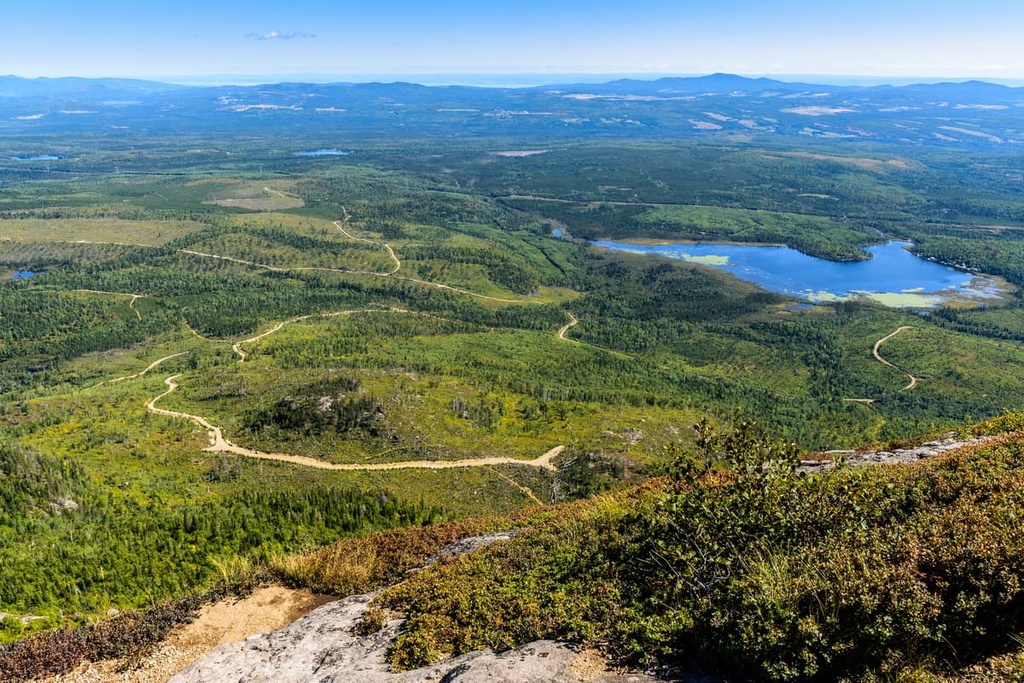
Geologically, the peaks in Parc national des Grands-Jardins are part of the Laurentian Mountains (Laurentides), which stretch from southern Quebec all the way to southeastern Labrador along the north coast of the Saint Lawrence River.
The park is underlain by the Canadian Shield, which is a massive area of Precambrian metamorphic and igneous rocks that form the core of the North American Craton. The Canadian Shield encompasses a vast swath of land throughout much of northern and eastern Canada as well as parts of the northern US and Greenland.
Furthermore, the Laurentian Mountains are among the oldest mountain ranges in the world. The rocks within the range are primarily Precambrian in age.
The range itself was formed primarily by the Grenville orogeny. This orogeny was a major mountain building event during the Mesoproterozoic (1.6 to 1 billion years ago) that created a massive chain of mountains that extend as far south as Mexico and as far north as Scotland in the United Kingdom. The Grenville orogeny was associated with the formation of the supercontinent of Rodinia.
Parc national des Grands-Jardins also contains the remnants of an incredible geologic event—a meteorite strike. Approximately 360 million years ago, a meteorite approximately 2 km (1.2 mi) in diameter struck the land that is now part of the park, leaving behind a depression that’s some 5 km (3.1 mi) deep. You can see this crater if you hike to the summit of Mont du Lac des Cygnes.
The park was also extensively covered with glaciers during the last glacial maximum. You can see evidence of this past glaciation in the region’s many kettle lakes, eskers, moraines, and U-shaped valleys.
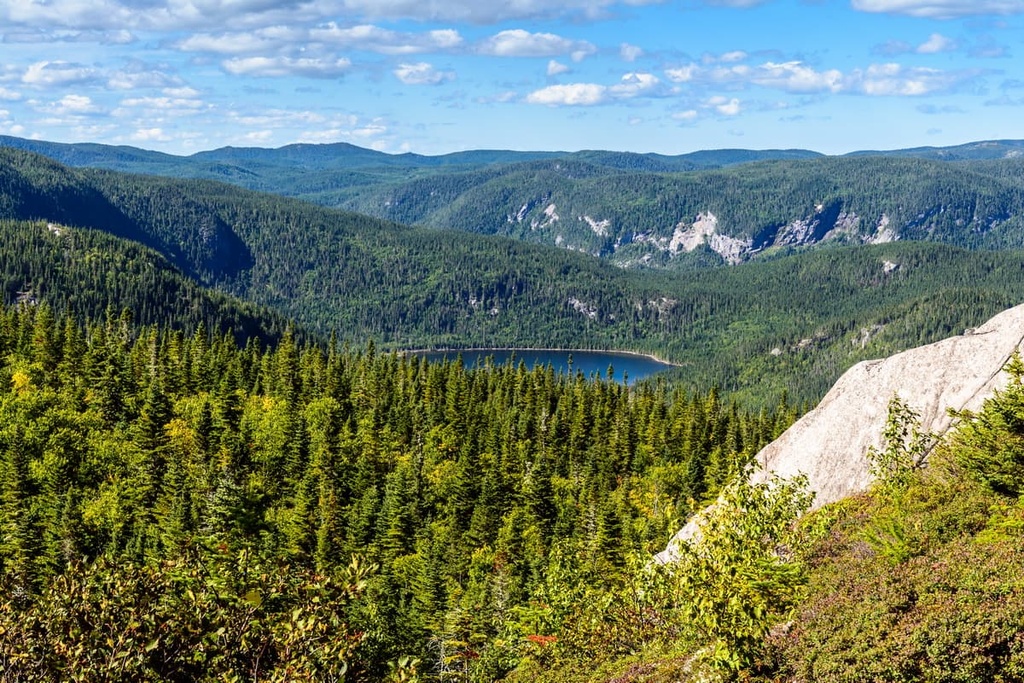
Major high points located within parc national des Grands-Jardins include Mont René-Richard, Mont du Lac des Cygnes, Mont Jean-Palardy, and Mont du Lac à Moïse.
Parc national des Grands-Jardins is home to a diversity of habitats and ecosystems. Due to the variety of elevations found within the park, the region contains everything from taiga to alpine ecosystems.
Trees in the forest are primarily balsam fir and black spruce, though you can also find some jack pines, white birch, aspen, and larches. The park also contains two sizable peat bogs, particularly around Lac Malbaie.
That said, the park’s most prolific flora is easily heather. There are at least 15 different species of heather found in the park. Additionally, Grands-Jardins is home to more than 200 species of lichen plus an assortment of shrubs and wildflowers, such as leatherleaf, wintergreen, and Labrador tea.
The park is also the perfect habitat for dozens of animal species. Mammals found in the park include porcupines, moose, marmots, Canada beavers, muskrats, snowshoe hares, coyotes, Canada lynx, mink, martens, white-tailed deer, black bears, red foxes, gray wolves, and even woodland caribou.
Some of the many bird species found in the park include the golden eagle, Bicknell’s thrush, peregrine falcon, black-backed woodpecker, common loon, and Barrow’s goldeneye.
In the park’s many lakes and rivers, you can also find a number of marine ecosystems. These ecosystems are home to a variety of species such as wood frogs, northern frogs, American toads, and northern two-lined salamanders. There are also populations of brook trout and Arctic char in the park’s waterways.
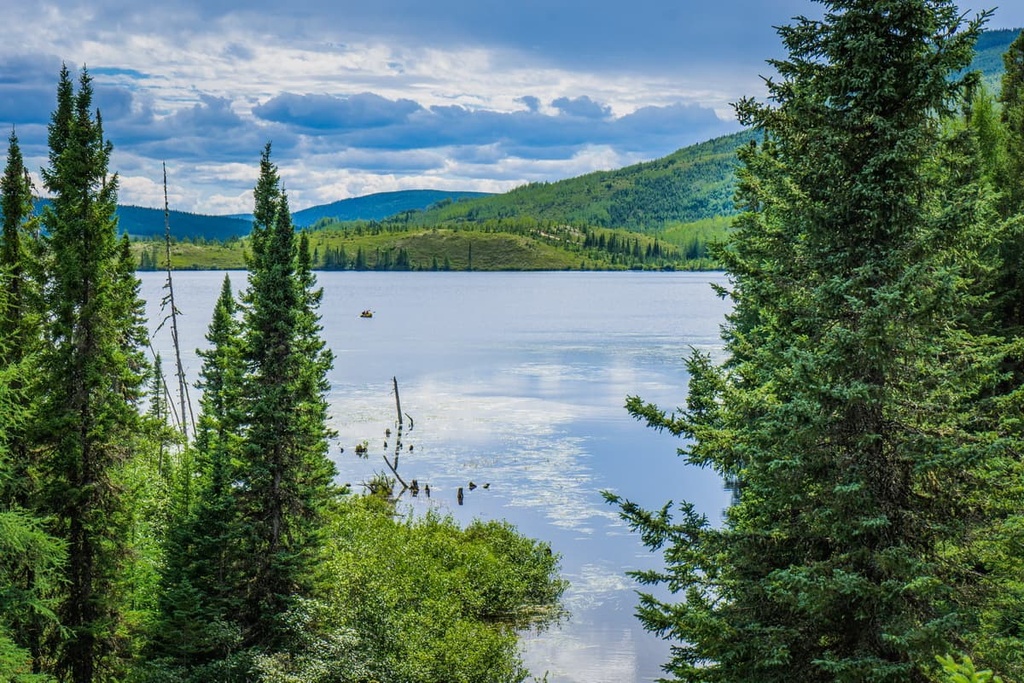
The land that is now part of Parc national des Grands-Jardins has been inhabited by humans for countless generations. It is part of the ancestral homelands of the Huron-Wendat Nation (Nation Huronne-Wendat).
The first peoples of European descent to have visited the region were likely French sailors and whalers. Jacques Cartier of France was one of the first people of European descent to visit what is now called Saguenay Fjord to the north of the park in the 1530s. However, Europeans didn’t establish permanent settlements in the region for another century.
In 1636, the Company of One Hundred Associates (Compagnie de la Nouvelle-France or Compagnie des Cent-Associés), a French fur trading and colonization company, created the Seigneurie de Beaupré in the area that is now Baie-Saint-Paul. This began a long history of European settlement of the region and the establishment of countless homesteads.
During the late nineteenth century, the region was a popular holiday destination for wealthy tourists from the US, UK, and Ontario who came to hunt caribou. It was frequented by members of the La Roche Hunting and Fishing Club throughout the nineteenth century In 1895, the precursor to the modern park, Parc des Laurentides, was created to protect the region’s incredible biodiversity.
Over the next few centuries, the forests of the Charlevoix region were heavily logged as timber production was the region’s primary industry. Logging was particularly prevalent during the mid twentieth century when nearly 40 percent of the current Parc national des Grands-Jardins was clear cut.
By 1981, the government of Quebec decided to further protect the region by establishing Parc national des Grands-Jardins. This made Grands-Jardins the third national park of Quebec. The park was later also designated as part of a UNESCO Biosphere Reserve (called Charlevoix Biosphere Reserve), a testament to the ecological importance of the region.
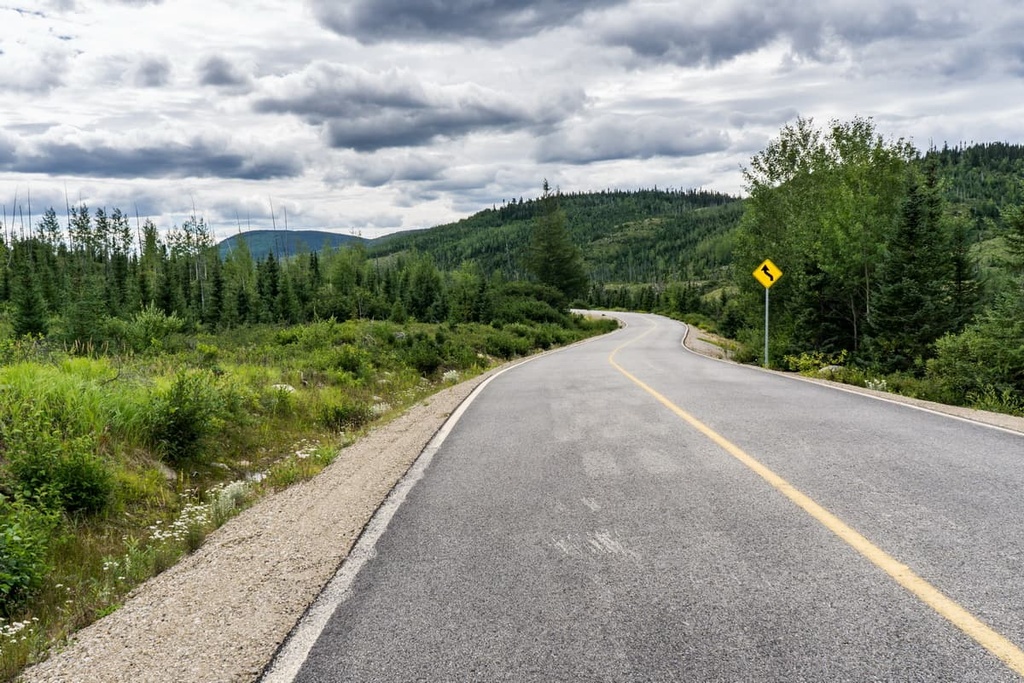
Parc national des Grands-Jardins offers a number of hiking trails for visitors to enjoy. Some of the most popular trails include:
In addition to hiking, visitors to Grands-Jardins can enjoy a whole host of other activities. These include:

If you want to paddle during your visit to the park, both of Grands-Jardin’s visitors centers offer boat and paddleboard rentals. Both visitors centers also offer snowshoe and crampon rentals during the winter months.
If fishing is more your style, keep in mind that you need to have a fishing right of access pass before you can cast lines at the park. You can book fishing passes online or by calling the park’s visitors centers.
Rock climbing in the park is available free of charge to all visitors with the right skills and equipment. Most of the park’s major crags are available via hiking trails and there are dozens of routes available. The majority of the routes in the park are between 5.6 and 5.11 in difficulty.
Finally, there are two via ferrata circuits available on Mont du Lac des Cygnes. They are only open during the summer and early fall. If you want to try these via ferrata, you’ll have to book a tour ahead of time with Parcours Aventures.
Any visit to parc national Grands-Jardins is bound to be an exceptional experience. Here are some of the most important things to keep in mind when planning your trip to the park.
Like most national parks of Quebec, anyone visiting Grands-Jardins needs to pay an entrance fee. However, unlike many other parks, you must purchase your entrance pass to Grands-Jardins online as in-person ticket pass purchases are not available.
Anyone over the age of 18 can buy either a daily pass or an annual pass to Grands-Jardins. Alternatively, if you plan to visit multiple parks in the province, you can get an annual pass to all of the national parks of Quebec that’s also valid at Grands-Jardins.
Grands-Jardins National Park is open all year round and it’s accessible via a number of different roads.
The park is located approximately 125 km (78 mi) to the north of Quebec City and 387 km (240 mi) to the north of Montreal. From Quebec City, you can get to the park via Quebec Routes 138 and 381.
However, nore that some of the park’s roads may be closed due to inclement weather, especially if there was recent heavy snowfall.
If you need information or gear rentals during your trip to Parc national des Grands-Jardins, there are two visitor and registration centers for you to check out:
Both visitor centers offer equipment rentals, souvenir shops, and food services. For the most part, both visitors centers are open from about 9 am to 4 pm each day, though they tend to have later hours during the summer months. The visitors centers are generally closed on major national holidays, too, so check the Sépaq website for more information.

Visitors to Parc national des Grands-Jardins have a number of accommodation options to choose from. Here are some of the best places to stay in the park during your next visit.
Parc national des Grands-Jardins is home to a number of campgrounds that operate during the spring, summer, and early fall months. These include:
Each campground offers different amenities for visitors to enjoy. The campsites at Pied-des-Monts and Arthabaska are either semi-serviced or full-serviced, so they’re best for RV campers and tent campers that enjoy extra creature comforts. Both Camping La Roche and Étang Malbaie offer more rustic campsites for tent campers.
You can book all spring, summer, and fall campground sites on the Sépaq website. The park also offers fishing-camping packages for campers that also want to enjoy some fishing during their visit.
During the winter, visitors can also winter camp in the park. The only campgrounds open during the winter (generally mid December to late March) are Pied-des-Monts and Étang Malbaie. Winter camping at both campgrounds requires hiking or skiing to your campsite. The park only accepts phone reservations for winter camping, too.
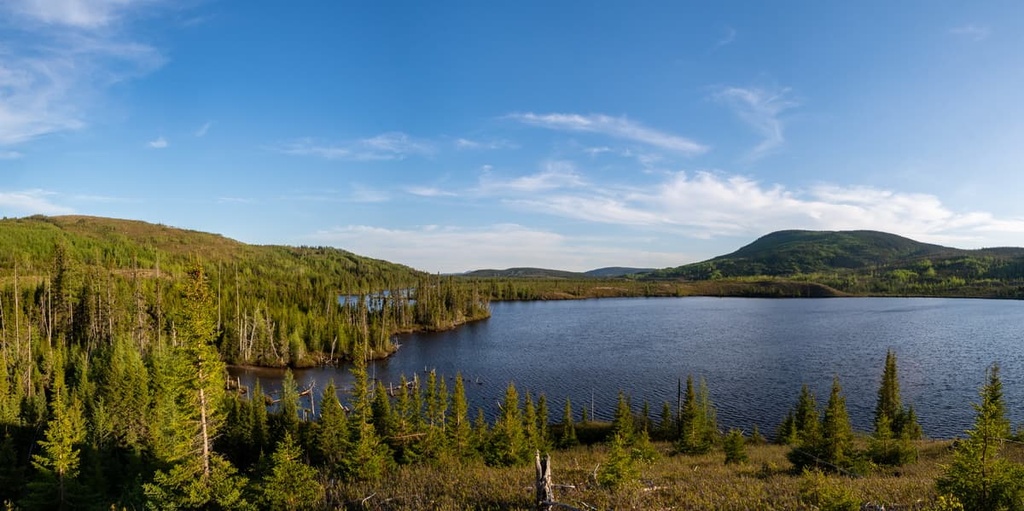
In addition to campgrounds, parc national des Grands-Jardins also offers a number of cabins and huts for visitors to rent. Some of the many cabins available include:
Anyone wishing to stay at a cabin or hut in the park should make a reservation in advance. All of the cabins in the park can be reserved online except the Scandinavian-style huts, which need to be reserved over the phone.
Parc national des Grands-Jardins also offers 17 so-called ready-to-camp sites at Pied-des-Monts and 6 sites at Arthabaska. These sites all feature large canvas tents that can accommodate about 4 people.
Each ready-to-camp site includes everything you need for a fun weekend of camping. They come with kitchen equipment, propane camp stoves, small refrigerators, and picnic tables. You simply need to bring clothes, towels, sleeping bags, pillowcases, and food for your stay.
Ready-to-camp sites can be reserved online at the Sépaq website. Most of these sites are only open during the spring, summer, and fall months.
Looking for a place to stay near Parc national des Grands-Jardins? Here are some of the best nearby cities and towns to check out:
Baie-Saint-Paul is one of the largest cities in Charlevoix Regional County Municipality. It is home to approximately 4,500 people in its urban area and it is particularly well-known in Quebec for its many restaurants, shops, and art galleries.
The city’s claim to fame, however, is that it was the original location of Cirque du Soleil when it was founded by Guy Laliberté and Gilles Ste-Croix in 1984. These days, it is also a popular tourist center, thanks in part to its proximity to a number of popular ski resorts, including Le Massif de Charlevoix.
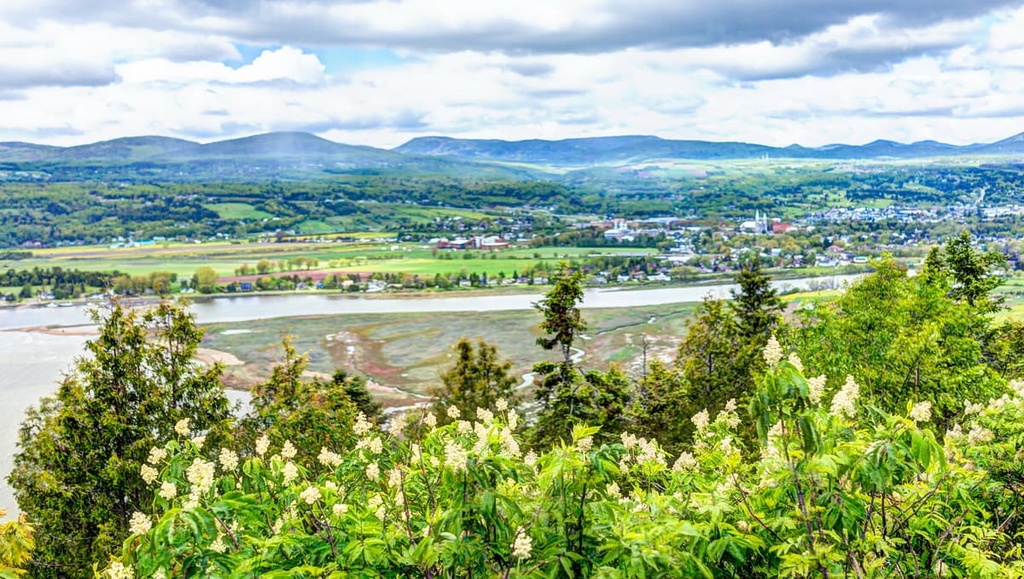
Saint-Siméon is a municipality located just to the north of Grands-Jardins. The entire municipality is home to approximately 1,200 people, many of whom live in the village of Saint-Siméon.
Although it isn’t as well known as other towns in Charlevoix, Saint-Siméon is a true maritime paradise that’s well worth a visit. It offers everything from hiking trails and campgrounds to beautiful beaches, making it a nice destination for the whole family to enjoy.

Situated just to the northwest of Grands-Jardins, Saguenay is a city of approximately 150,000 people that’s located in the Lac-Saint-Jean region. The city is situated along the banks of the Saguenay River to the west of Parc national du Fjord-du-Saguenay.
Saguenay is a historic city that also serves as a major cultural and commercial hub for the bulky of Quebec to the north of Quebec City. The city’s economy is quite diverse, but it’s also a popular tourist destination for both international and domestic visitors. Saguenay is home to a plethora of shops, restaurants, and hotels, and it has great road access to Quebec City.
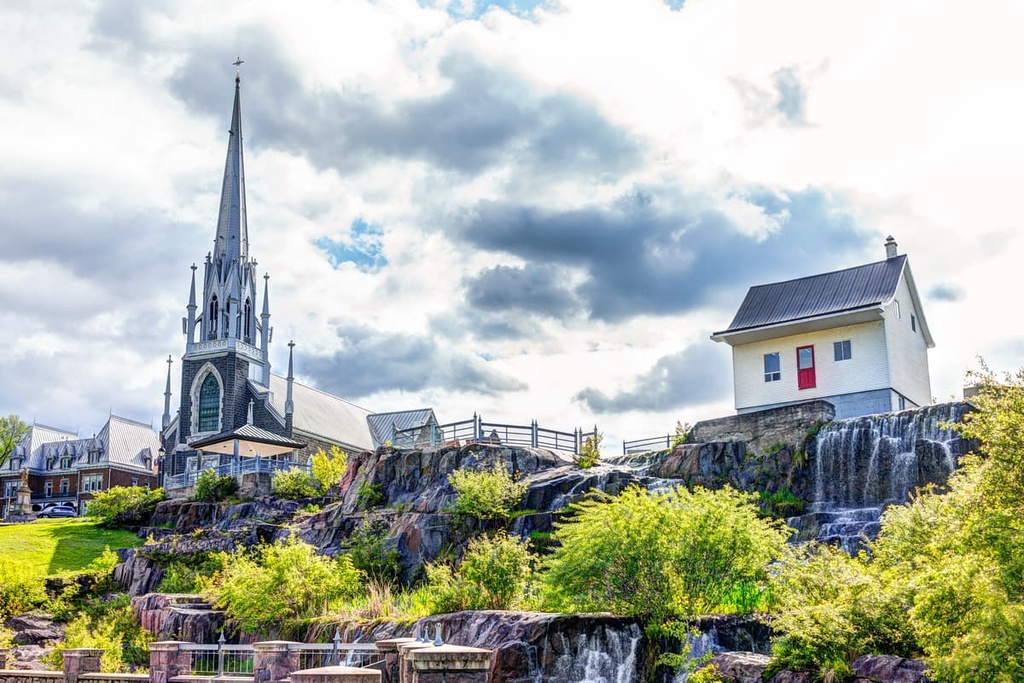
The capital of Quebec, Quebec City is home to approximately 500,000 people, making it the second largest city in the province after Montreal. It is situated to the southeast of the park along Cap Diamant of the Saint Lawrence River.
Quebec City is one of the oldest European-founded cities in North America. It was established by Samuel de Champlain in 1608 and it remains the only city in North America that still has its fortified city walls. Quebec City’s old town is also a UNESCO World Heritage Site.
If you’re visiting Grands-Jardins from afar, Quebec City may be the first stop on your journey. The city has its own international airport as well as good road connections and intercity rail/bus service.
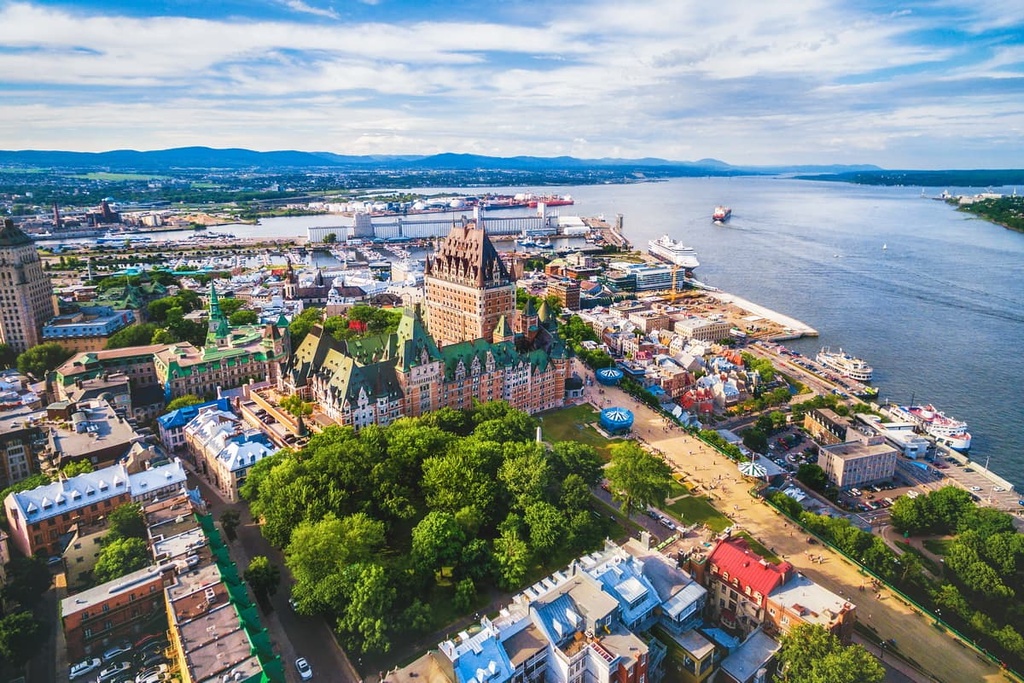
Explore Parc national des Grands-Jardins with the PeakVisor 3D Map and identify its summits.








